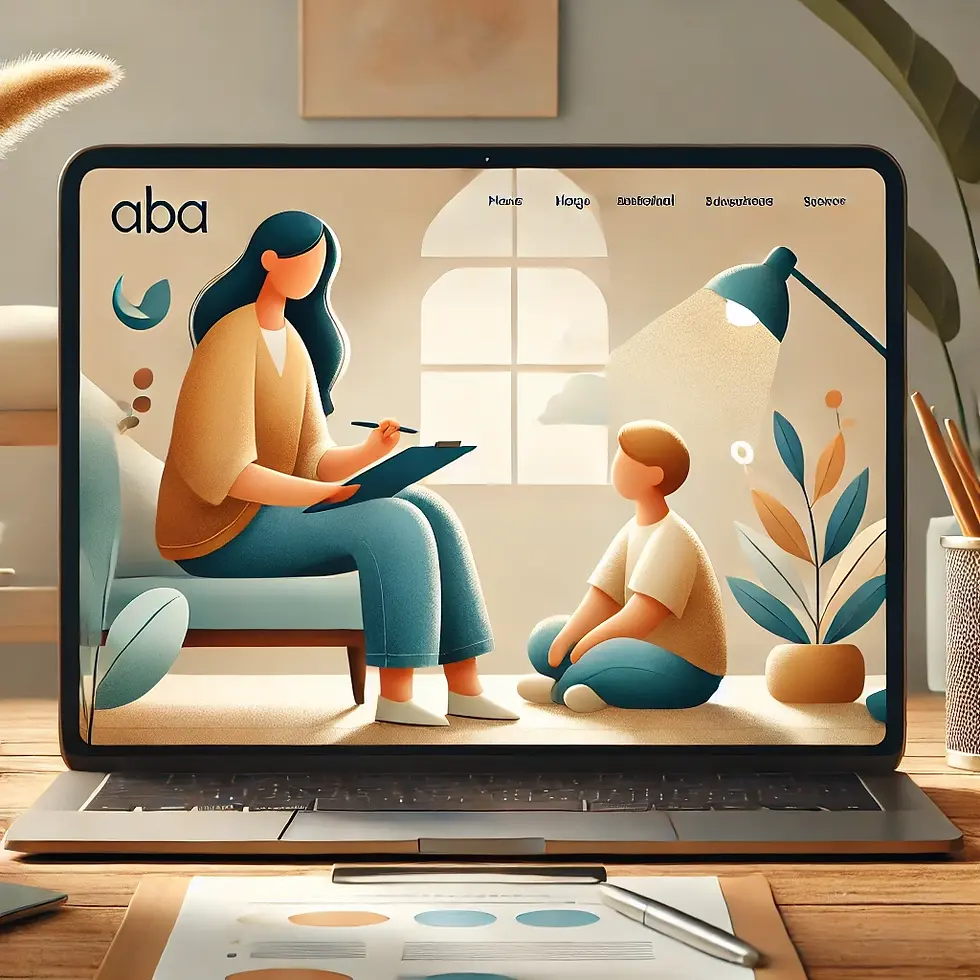ABA Terms Cheat Sheet: A Parent’s Guide to Understanding the Science
- Ryan Carvalho
- Jan 31
- 3 min read
Introduction
Applied Behavior Analysis (ABA) is an evidence-based approach used to help individuals learn new skills, improve behavior, and increase independence. While incredibly effective, ABA comes with its own terminology, which can sometimes feel like a new language to parents. Understanding key terms will not only help you navigate ABA therapy but also allow you to better advocate for your child’s success. Below is a cheat sheet of common ABA terms explained in simple, practical language.
Key ABA Terms and What They Mean
1. Reinforcement
Reinforcement is the backbone of ABA therapy. It means increasing a behavior by following it with something rewarding. There are two main types:
Positive Reinforcement: Adding something enjoyable to encourage a behavior (e.g., giving a child a sticker for completing their homework).
Negative Reinforcement: Removing something unpleasant to encourage a behavior (e.g., letting a child skip a difficult question after they complete three correctly).
Reinforcement helps children learn and repeat positive behaviors over time.
2. Extinction
Extinction means reducing a behavior by no longer reinforcing it. If a child has been receiving attention for throwing tantrums, and suddenly no longer gets attention for it, the behavior will start to decrease. However, before it disappears, it may get worse first (see Extinction Burst).
3. Extinction Burst
This happens when a behavior temporarily increases in intensity before it decreases. Imagine a vending machine stops giving snacks—people press the button repeatedly, shake the machine, or even hit it before giving up. Similarly, a child may cry louder or tantrum more when a behavior is no longer reinforced. This is a normal and temporary phase in the learning process.
4. Prompting
Prompting is helping a child complete a task or behavior until they can do it independently. Types of prompts include:
Physical Prompts: Gently guiding a child’s hands to teach them how to brush their teeth.
Verbal Prompts: Giving spoken instructions, like saying, “Tell me what you want.”
Gestural Prompts: Pointing to an object to guide the child.
The goal is to gradually reduce prompts so the child can complete the skill on their own.
5. Generalization
Generalization means being able to use a skill in different situations. For example, if a child learns to say “thank you” at home but never says it at school, they haven’t generalized the skill. ABA ensures children can apply what they learn across various environments, people, and situations.
6. Function of Behavior
Every behavior serves a purpose, or a function. Understanding this helps determine the best strategy to address challenging behaviors. The four main functions of behavior are:
Attention: The child wants social interaction.
Escape: The child wants to avoid something (e.g., a difficult task).
Access to Tangibles: The child wants an item (e.g., a toy, food).
Sensory Stimulation: The child enjoys how the behavior feels (e.g., rocking, hand-flapping).
7. Behavior Intervention Plan (BIP)
A Behavior Intervention Plan is a structured plan created to address specific challenging behaviors. It outlines:
The behavior of concern.
What triggers it.
Strategies to reduce the behavior and teach alternatives.
BIPs are customized to each child’s needs and help ensure consistency across settings.
Conclusion
Understanding these ABA terms will help you feel more confident in supporting your child’s therapy journey. ABA is not about controlling behavior but about teaching new skills, fostering independence, and improving quality of life. If you have questions or want personalized guidance, feel free to reach out—we’re here to help!





Comments